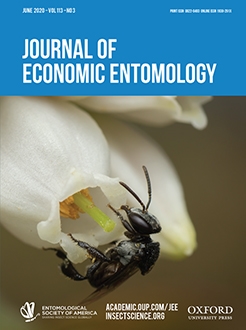The diamondback moth, Plutella xylostella (L.), is a worldwide insect pest of cruciferous crops. Although insecticides have long been used for its control, diamondback moth rapidly evolves resistance to almost any insecticide. In insects, juvenile hormone (JH) is critically involved in almost all biological processes. The correct activity of JH depends on the precise regulation of its titer, and juvenile hormone esterase (JHE) is the key regulator. Thus, JH and JHE have become important targets for new insecticide development. Trifluoromethyl ketones are specific JHE inhibitors, among which 3-octylthio-1,1,1-trifluoropropan-2-one (OTFP) has the highest activity. The interaction effects between pretreatment with or combination of OTFP and the insecticides diafenthiuron, indoxacarb, and Bacillus thuringiensis (Bt) were investigated in diamondback moth larvae to determine OTFP's potential as an insecticide synergist. In third-instar larvae, both pretreatment and combination treatment with OTFP decreased or antagonized the toxicities of diafenthiuron, indoxacarb, and Bt at all set concentrations. In fourth-instar larvae, combination treatment with OTFP decreased or antagonized the toxicities of diafenthiuron and indoxacarb at all set concentrations. However, it increased or synergized the toxicity of Bt at lower concentrations despite the limited effect at higher concentrations. Our results indicated that the effect of OTFP on the toxicities of insecticides varied with the type and concentration, larval stage, and treatment method. These findings contribute to the better use of OTFP in diamondback moth control.
How to translate text using browser tools
16 March 2020
Effect of Treatment With 3-Octylthio-1,1,1-Trifluoropropan-2-One in the Diamondback Moth (Lepidoptera: Plutellidae) to the Toxicity of Diafenthiuron, Indoxacarb, and Bacillus thuringiensis
Jingfei Huang,
Sufen Tian,
Ke Ren,
Yong Chen,
Shuo Lin,
Yixin Chen,
Houjun Tian,
Jianwei Zhao,
Changfang Wang,
Hui Wei,
Xiaojun Gu
ACCESS THE FULL ARTICLE
It is not available for individual sale.
This article is only available to subscribers.
It is not available for individual sale.
It is not available for individual sale.

Journal of Economic Entomology
Vol. 113 • No. 3
June 2020
Vol. 113 • No. 3
June 2020
3-octylthio-1,1,1-trifluoropropan-2-one
Bacillus thuringiensis (Bt)
diafenthiuron
indoxacarb
Plutella xylostella




